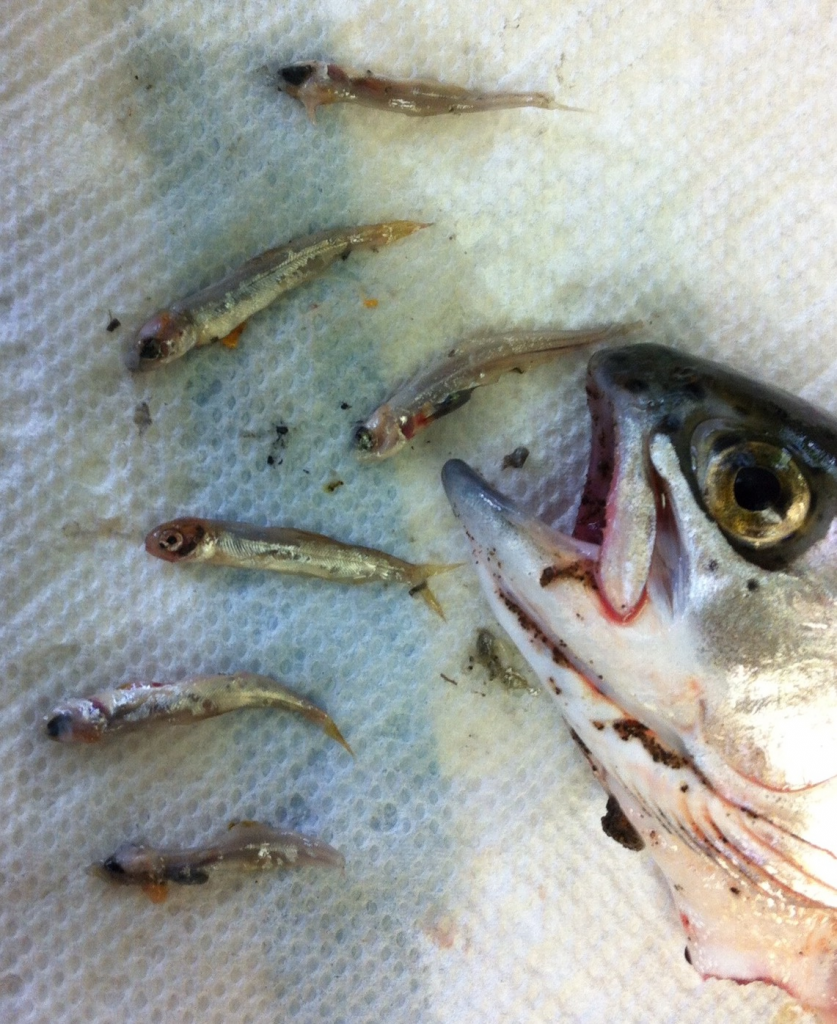Approximately 1.3 million yearling Steelhead smolts are released each year in rivers below our three state and one federal Central Valley Steelhead hatcheries. The hatcheries include Coleman Hatchery (federal) on Battle Creek near Redding, Feather River Hatchery (state) near Oroville, Nimbus Hatchery (state) on American River near Folsom, and Mokelumne River Hatchery (state) near Lodi. The smolts are generally released as yearlings in February at about 4 to-the-pound and 6-10 inches in length. In some drought years (e.g., 2014), Nimbus Steelhead are also released to the American River as several-month-old fingerlings in June because hatchery source water from Lake Natoma is too warm to carry the fish through summer until the normal February release date.
The problem with releasing over a million hatchery Steelhead smolts into the rivers in the spring is that wild Spring-Run and Fall-Run Chinook salmon fry emerge or have recently-emerged from redds at this time. The one-inch salmon fry are ready-made prey for the hatchery Steelhead smolts. Figure 1 shows the partial stomach contents (six salmon fry) of a hatchery Steelhead smolt caught in early March in the lower American River.

Figure 1. Partial stomach contents of an American River hatchery steelhead smolt (head at right) captured in early March 2015 near Sunrise Bridge. There were partial remains of twenty salmon fry in various stages of digestion in the stomach.
While many hatchery Steelhead likely migrate from the rivers towards the Bay-Delta soon after release, many also stay in the rivers. This is especially true in the American River, where they may be released early as fingerlings prior to summer and are thus likely to take up residence in the river. Many Feather hatchery smolts take up residence in the lower Yuba River. Smolts released in rivers also are more prone to becoming permanent river residents in drought years when there are fewer pulses of flow to stimulate emigration to the sea, especially in the Feather, American, and Mokelumne Rivers. Salmon fry may become prey of the hatchery Steelhead smolts for a few days to a month or more.
Releasing hatchery Steelhead into the lower rivers in such large numbers also impacts wild Steelhead that are present in much smaller numbers. The hatchery smolts compete with the wild smolts. Hatchery smolts attract large numbers of predatory birds and fish (e.g., Striped Bass). Hatchery smolts also feed on wild Steelhead fry that emerge from redds from April to June.
What can be done to help solve the problem?
- Hatchery Steelhead smolts should be trucked to the lower Sacramento River rather than being released in their natal rivers.
- The trucked hatchery smolts should be placed in barges, then barged from the Sacramento River to low salinity waters of the Bay to reduce the probability of their immediately returning to their natal rivers (and to maximize their survival to the ocean). Barging is necessary to minimize subsequent adult straying to non-natal rivers, a problem if smolts are trucked all the way to the Bay.
- Fingerlings should also not be released into natal rivers below the hatcheries. They too should be trucked then barged to the upper Bay.
- Pre-smolts could be released in early winter to natural floodplain habitats or even to specially designed flooded rice fields to grow to smolt size.
These actions, if taken, will both reduce predation on wild salmon and Steelhead fry and markedly increase survival of hatchery Steelhead to the Ocean and subsequent escapement of adult Steelhead to the rivers. Record low numbers of Steelhead returned to Central Valley rivers in winter 2015. More on this subject will come in later posts.
For more details on the Steelhead hatchery programs see the following website: http://cahatcheryreview.com/summary-conclusions/
